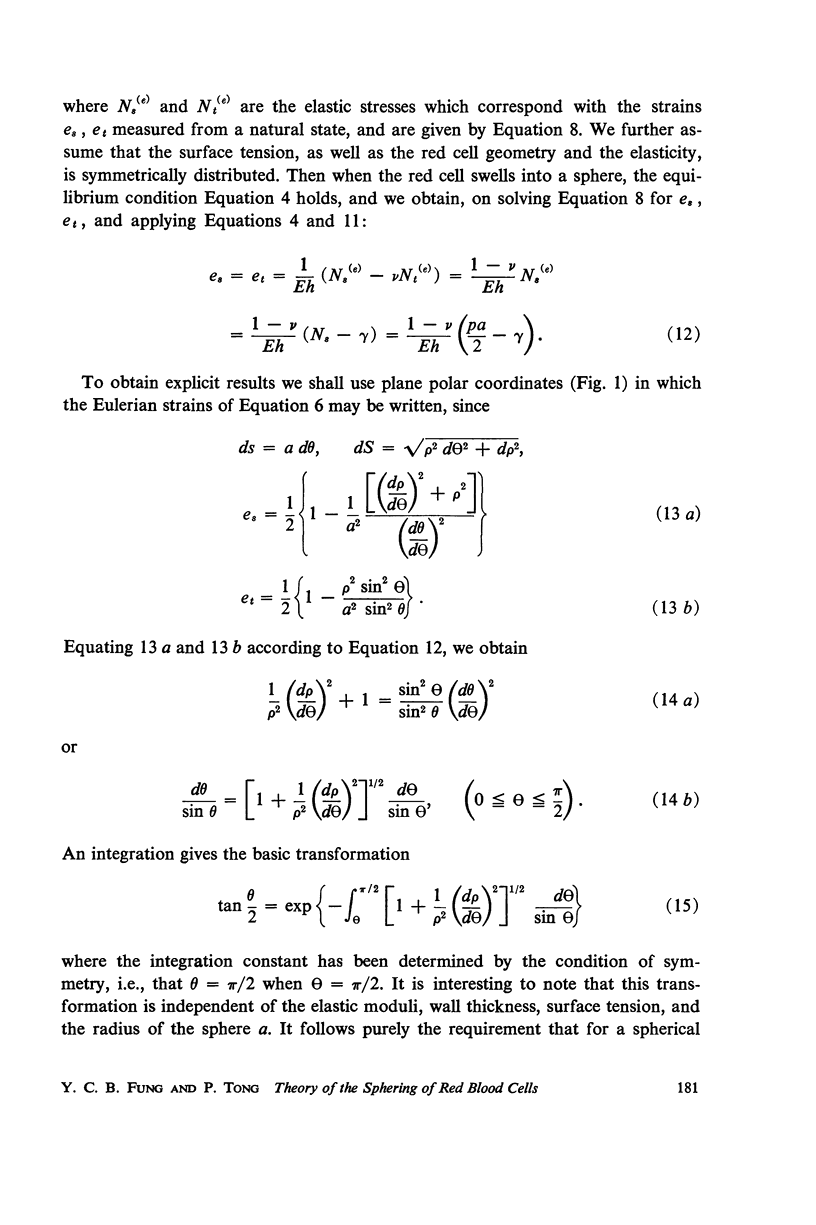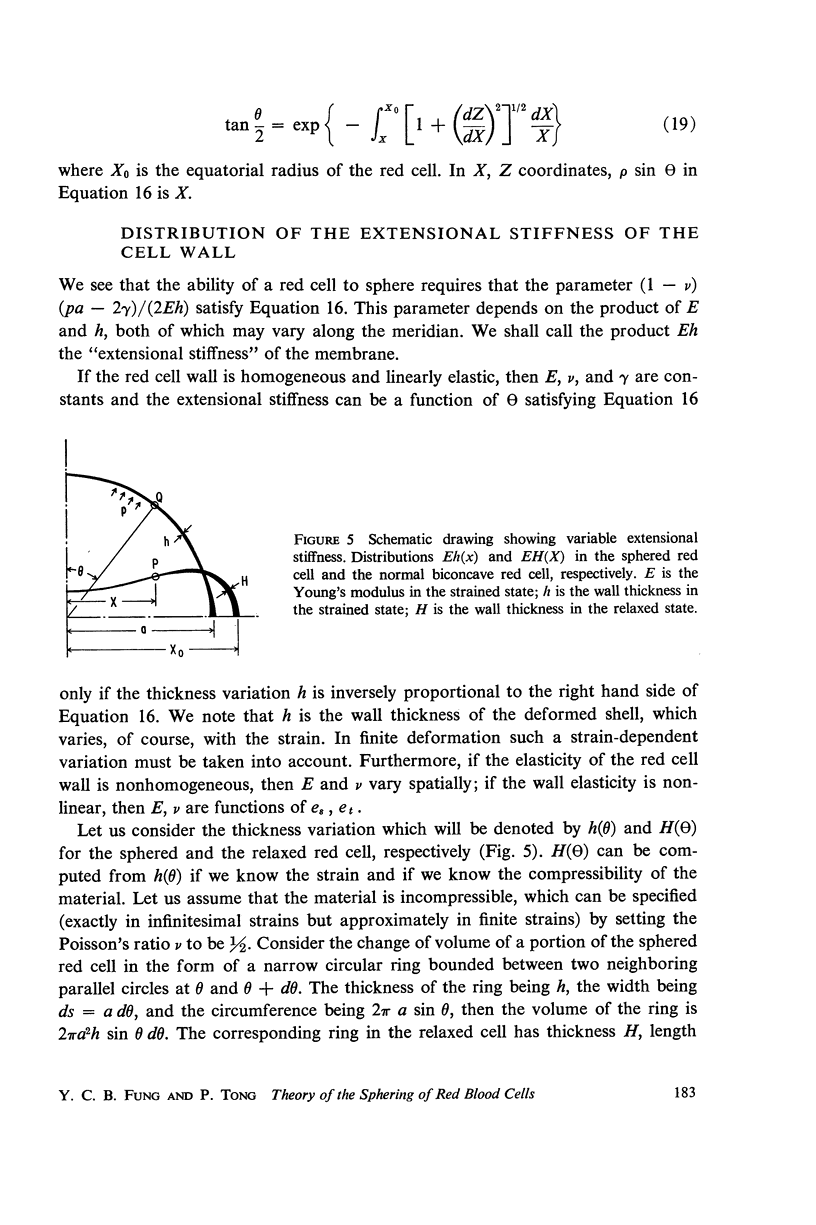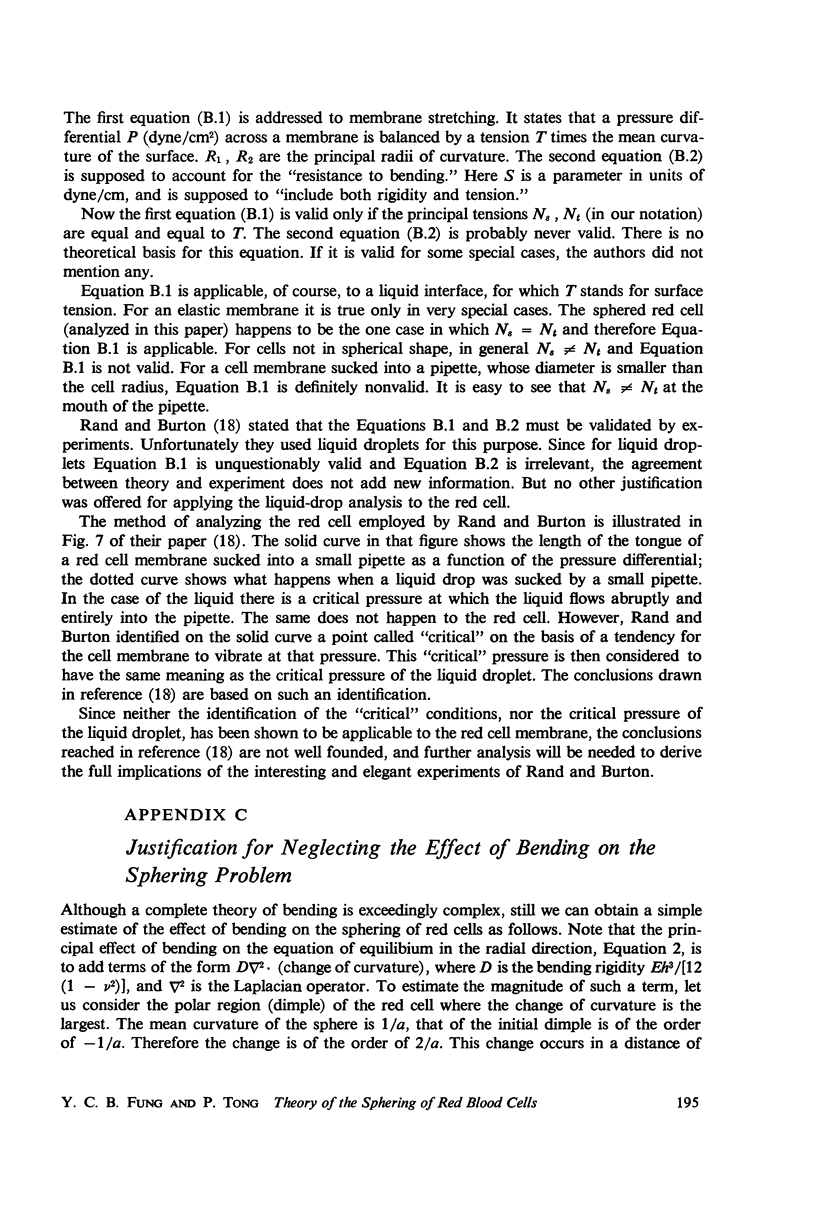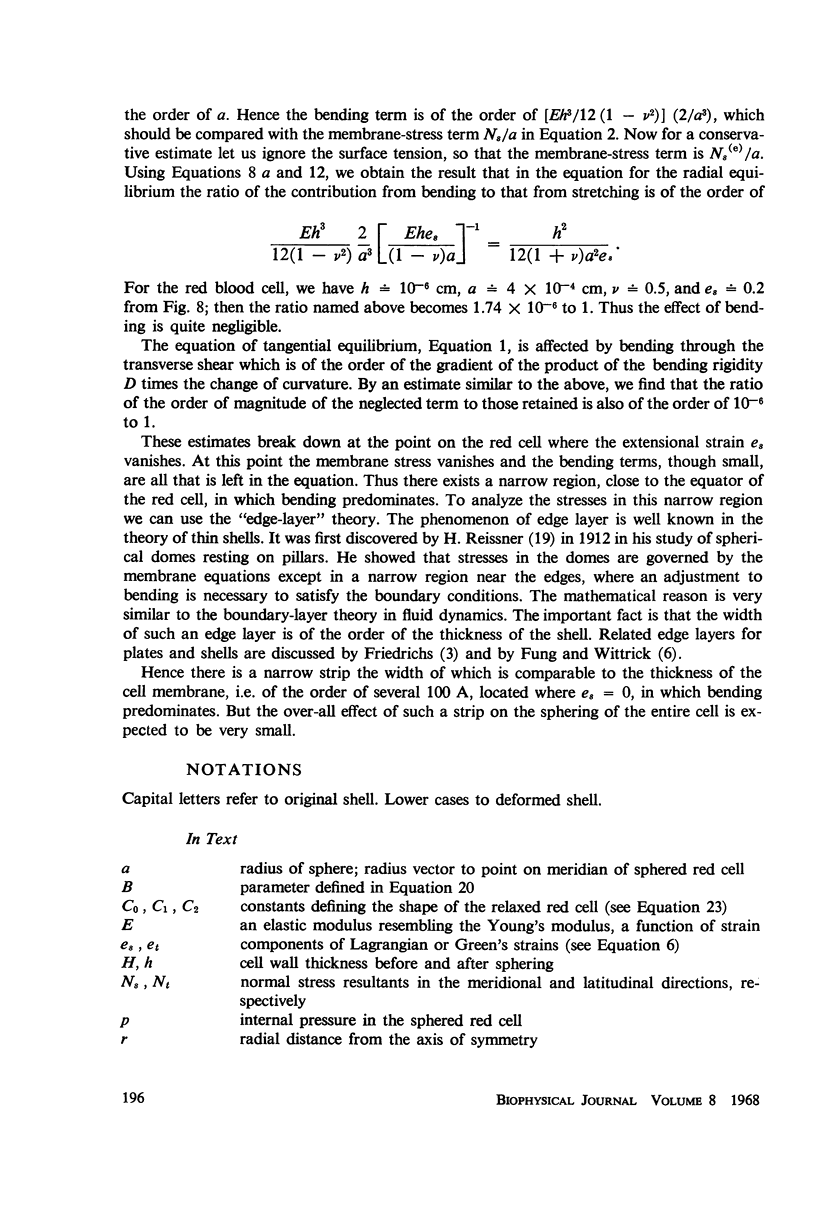Abstract
A rigorous mathematical solution of the sphering of a red blood cell is obtained under the assumptions that the red cells is a fluid-filled shell and that it can swell into a perfect sphere in an appropriate hypotonic medium. The solution is valid for finite strain of the cell membrane provided that the membrane is isotropic, elastic and incompressible. The most general nonlinear elastic stress-strain law for the membrane in a state of generalized plane stress is used. A necessary condition for a red cell to be able to sphere is that its extensional stiffness follow a specific distribution over the membrane. This distribution is strongly influenced by the surface tension in the cell membrane. A unique relation exists between the extensional stiffness, pressure differential, surface tension, and the ratio of the radius of the sphere to that of the undeformed red cell. The functional dependence of this stiffness distribution on various physical parameters is presented. A critique of some current literature on red cell mechanics is presented.
Full text
PDF























Images in this article
Selected References
These references are in PubMed. This may not be the complete list of references from this article.
- BAKER R. F. THE FINE STRUCTURE OF STROMALYTIC FORMS PRODUCED BY OSMOTIC HEMOLYSIS OF RED BLOOD CELLS. J Ultrastruct Res. 1964 Dec;11:494–507. doi: 10.1016/s0022-5320(64)80078-2. [DOI] [PubMed] [Google Scholar]
- Fung Y. C. Theoretical considerations of the elasticity of red cells and small blood vessels. Fed Proc. 1966 Nov-Dec;25(6):1761–1772. [PubMed] [Google Scholar]
- GUEST M. M., BOND T. P., COOPER R. G., DERRICK J. R. RED BLOOD CELLS: CHANGE IN SHAPE IN CAPILLARIES. Science. 1963 Dec 6;142(3597):1319–1321. doi: 10.1126/science.142.3597.1319. [DOI] [PubMed] [Google Scholar]
- Gregersen M. I., Bryant C. A., Hammerle W. E., Usami S., Chien S. Flow Characteristics of Human Erythrocytes through Polycarbonate Sieves. Science. 1967 Aug 18;157(3790):825–827. doi: 10.1126/science.157.3790.825. [DOI] [PubMed] [Google Scholar]
- MURPHY J. R. ERYTHROCYTE METABOLISM. VI. CELL SHAPE AND THE LOCATION OF CHOLESTEROL IN THE ERYTHROCYTE MEMBRANE. J Lab Clin Med. 1965 May;65:756–774. [PubMed] [Google Scholar]
- McCutcheon E. P., Rushmer R. F. Korotkoff sounds. An experimental critique. Circ Res. 1967 Feb;20(2):149–161. doi: 10.1161/01.res.20.2.149. [DOI] [PubMed] [Google Scholar]
- RAND R. P., BURTON A. C. MECHANICAL PROPERTIES OF THE RED CELL MEMBRANE. I. MEMBRANE STIFFNESS AND INTRACELLULAR PRESSURE. Biophys J. 1964 Mar;4:115–135. doi: 10.1016/s0006-3495(64)86773-4. [DOI] [PMC free article] [PubMed] [Google Scholar]



